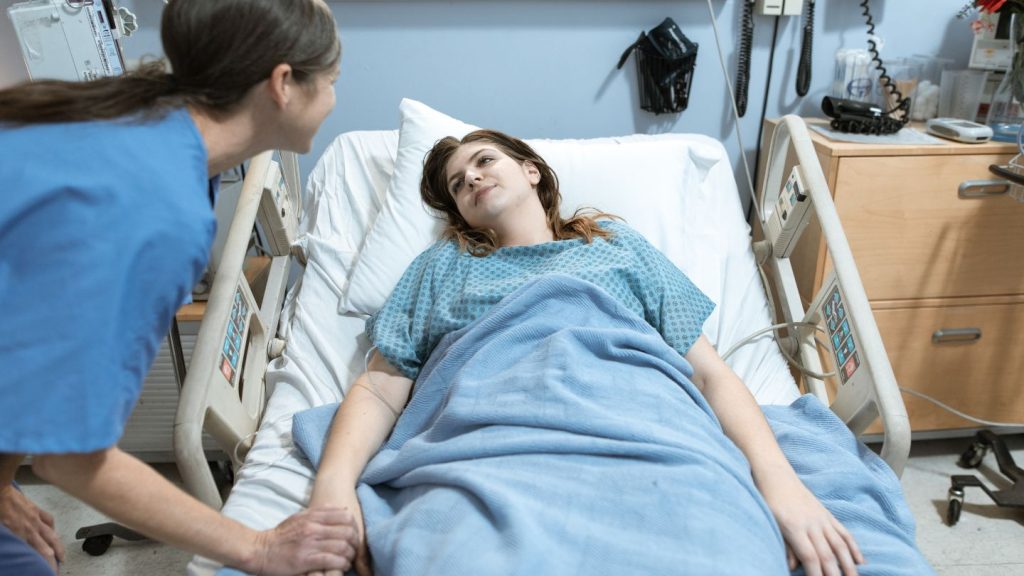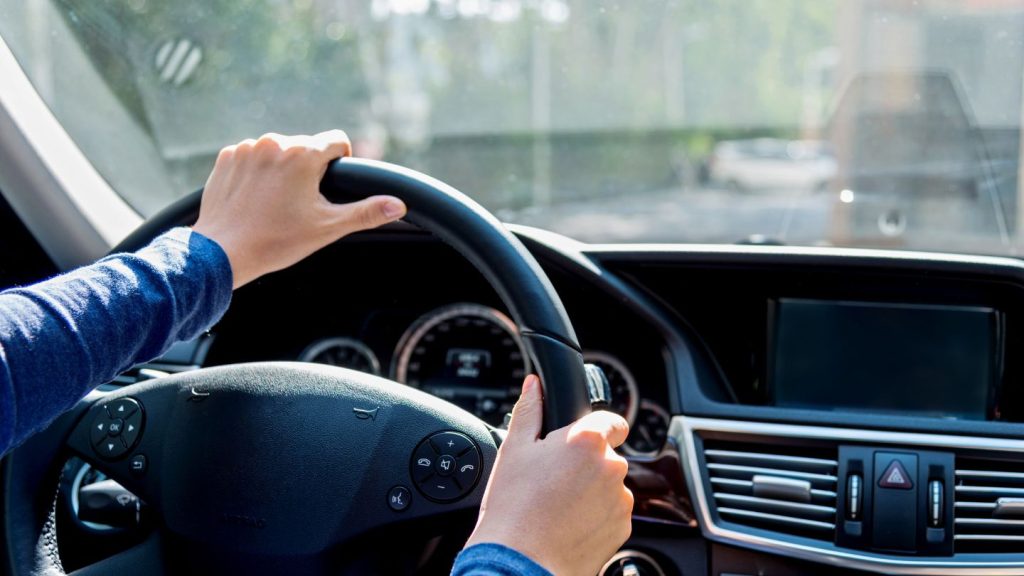
When Can You Hit the Road After Gastric Sleeve Surgery? A Quick Guide
Many patients ask, “When can you hit the road after gastric sleeve surgery?” Typically, light driving is possible within 1 to 2 weeks, provided you are pain-free and off medications. This blog outlines the essential factors affecting your driving readiness, including recovery progress and advice from your healthcare provider, ensuring you feel confident and safe during your post-surgery journey.
Key Takeaways
- Recovery times for resuming driving after gastric sleeve surgery vary by individual, with many patients able to start light driving within 1 to 2 weeks post-surgery.
- Consultation with healthcare providers is essential to assess recovery progress and ensure it’s safe to drive, considering the effects of pain medications and physical comfort.
- Gradual reintroduction of driving, starting with short routes, is recommended to build confidence and assess comfort before longer trips.
Overview
Recovering from gastric sleeve surgery is a unique journey for each patient. Some patients may be ready for light driving within 1 to 2 weeks post-surgery, while others might need more time to feel comfortable behind the wheel. The variability in recovery experiences means there’s no one-size-fits-all answer.
Light driving tasks might be manageable early on, but more demanding activities, such as operating a manual transmission, could be challenging. On average, many patients take about 3 to 4 weeks before they can safely resume driving. Consider your personal health, pain levels, and any potential complications when making this decision.
The decision to get back on the road should be based on your unique recovery experience. Seek personalized advice from your healthcare provider to ensure a safe and smooth transition back to driving.
Understanding Your Recovery Process

Several factors, including your overall health, pain levels, and any potential complications, influence the recovery process after gastric sleeve surgery. While some patients might feel ready to resume light driving within 1 to 2 weeks, others may require more time to heal and feel confident.
Recovery experiences can vary significantly. Depending on their healing and overall progress, some patients may take 3 to 4 weeks before safely driving. Keep in mind that there is no fixed timeline for resuming longer drives, as this depends largely on your recovery journey and how your body is adapting post-surgery.
Light driving tasks may be manageable early in recovery, but activities requiring greater physical effort, like operating a manual transmission, could still pose challenges. Always prioritize your safety and consult your healthcare team when making decisions about resuming driving.
Read more: What Is Gastric Sleeve Recovery Time Like? Essential Insights & Tips
Consulting Your Healthcare Provider
Your healthcare provider plays a key role in guiding your recovery and helping you determine when it’s safe to resume driving. Consulting with your provider allows for personalized advice tailored to your healing progress and helps identify any potential complications that could impact your ability to drive safely.
Bariatric surgeons, alongside the broader healthcare team, monitor your post-surgical recovery and provide guidance on managing your return to normal activities, including driving. They will help ensure that all medications, particularly those for pain management, have fully cleared your system before you consider getting behind the wheel. Medications can impair concentration and reaction time, making it essential to discuss their effects with your provider.
Post-Surgery Medication Considerations
Managing pain after gastric sleeve surgery often involves prescribed pain medications, which may temporarily impair your ability to concentrate and react quickly. Operating a vehicle while under the influence is not only unsafe but also against the law.
Before driving, ensure you are completely off pain medications and no longer experiencing side effects such as drowsiness or reduced focus. Speak with your healthcare team if you are unsure about your readiness. Your safety and that of others on the road should remain your top priority.
Assessing Physical Comfort and Mobility
Physical comfort and mobility are critical when determining your readiness to drive. After gastric sleeve surgery, ensure you can perform essential driving tasks, such as operating pedals, turning the steering wheel, and checking blind spots without pain or discomfort.
Adjusting your driving position and using cushions for support can help improve comfort while reducing strain on the surgical site. If any movement feels restricted or painful, it’s best to delay driving. Focus on achieving a relaxed, alert state before getting behind the wheel to ensure the safe and confident operation of your vehicle.
Typical Timelines for Resuming Driving

Most patients are advised to start light driving approximately 1 to 2 weeks after gastric sleeve surgery. However, individual readiness can vary based on factors such as recovery progress, overall health, and the nature of the surgery. While some may feel ready sooner, others might need additional time to regain full comfort and mobility.
It’s essential to feel confident in your ability to drive safely and ensure that all medications are out of your system before hitting the road. Listen to your body, and consult your healthcare provider for tailored advice to make informed decisions about resuming driving.
Gradual Return to Driving
To ensure a safe and smooth transition back to driving after surgery, start with short trips along familiar routes. Gradual reintroduction allows you to evaluate your comfort level and gauge your body’s response to driving.
If you experience any discomfort or have concerns about longer journeys, consult your healthcare provider for additional guidance. By gradually building confidence and endurance, you can minimize strain and support a healthy recovery. Taking small steps toward resuming driving is a key milestone in reclaiming independence after surgery.
Legal and Insurance Considerations
Ensure you are well-versed with the particular legalities and rules that govern resuming driving post-surgery since these can differ significantly depending on your geographical area. Every state and nation may have unique legal stipulations that determine when it’s safe to resume driving.
Adhere to any limitations set forth by your insurance provider. Being aware of their requirements and constraints is crucial in preventing possible issues. Before getting behind the wheel again, make sure you check with your insurer to verify that all necessary criteria are met.
Keeping abreast of legal and insurance considerations forms an essential part of the recovery process from surgery. By remaining informed, you guarantee a return to driving that is both compliant with regulations and secure for everyone involved.
Monitoring Healing Progress
Follow-up appointments evaluate how well you are healing and determine if it’s safe for you to drive again. General health, pain level, potential complications, and surgery timeline influence the decision on driving readiness.
During follow-up appointments, ask your healthcare provider about your readiness to resume driving. Follow your healthcare team’s advice to ensure safety and proper recovery.
Monitoring your healing progress ensures you are physically and mentally prepared to drive safely.
Cognitive Readiness
After undergoing surgery, it’s vital to ensure that your mental alertness and cognitive function are at levels safe enough for driving. The recovery process might impair your focus, so keep this in mind. Pain medications can lead to extended periods of sleepiness or a sensation of haziness mentally, which could negatively affect one’s ability to drive.
Stop driving immediately if you’re feeling tired or sick. Signs such as being easily distracted, having trouble focusing, or experiencing mental cloudiness suggest that you may not yet be fit to get behind the wheel.
It is important for patients’ physical and mental readiness for safely operating a vehicle to undergo continuous evaluations during their recovery period.
Read more: Comprehensive Guide to Gastric Sleeve Surgery: What You Need to Know
Summary
In conclusion, getting back behind the wheel after gastric sleeve surgery requires a careful assessment of your healing journey, consultation with your healthcare provider, and ensuring you’re both physically and mentally prepared. Each patient’s recovery is unique, and prioritizing your safety and well-being is paramount.
Wellstar Comprehensive Bariatric Services is proud to have expert gastric sleeve surgeons serving East Cobb, Marietta, Austell, Smyrna, LaGrange, and other locations across Georgia. Our team is committed to guiding you through a successful recovery. Your health and safety are our top priorities, and we are here to support you every step of the way. Ready to make a positive change? Contact us today!
Frequently Asked Questions
How soon can I start driving after gastric sleeve surgery?
You can typically start light driving around 1 to 2 weeks after gastric sleeve surgery, but it’s advisable to wait until you’re pain-free, off all medications, and fully comfortable.
Why is it important to consult my healthcare provider before driving?
It is vital to speak with your healthcare provider for personalized advice on when it would be safe for you to get back behind the wheel, as this decision should take into account the specific details of your recovery.
Taking this precautionary measure is critical not only for your own safety but also for safeguarding other road users.
What should I consider regarding pain medications and driving?
Operating a vehicle while on pain medications can compromise your concentration and slow down your reflexes, creating a considerable hazard to safety.
As such, it is critical that you avoid getting behind the wheel when taking these drugs.
How can I assess my physical readiness to drive?
Evaluate your pain intensity, range of motion, and general ease to determine if you are physically fit enough to safely pilot an automobile.
Before taking the wheel, it is essential that you feel not only physically able but also at ease when driving.
Are there any legal or insurance considerations I should be aware of?
Yes, you must comply with local laws regarding when you can resume driving after surgery and any restrictions from your insurance provider to avoid legal or financial repercussions.
